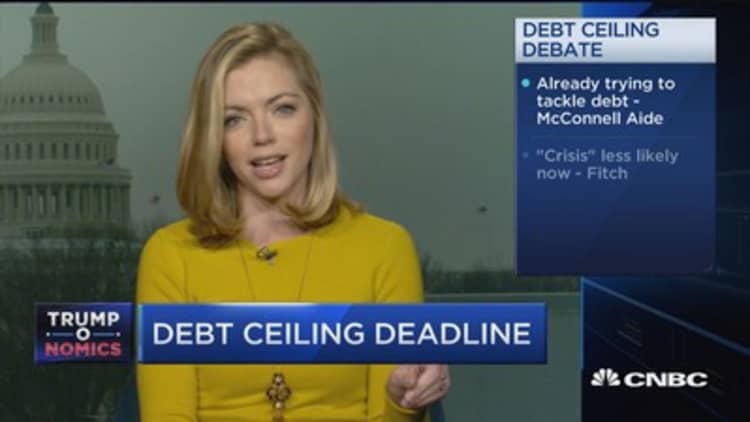
As Washington policymakers battle over President Donald Trump's cornerstone economic initiatives, they won't have to worry about the U.S. becoming a global deadbeat — yet.
The debt ceiling deadline came and went earlier this month with little of the attendant fanfare that has become the norm in recent years. That's because the government was able to employ "extraordinary measures" at its disposal to give itself the cash it needs to operate.
Consequently, the U.S. has continued to meet its obligations to creditors while keeping the doors open to the business of government.
In essence, there are three funds the Treasury Department can work with to keep the U.S. from defaulting on its debts: the savings plan for federal employees, often called the G Fund; the Exchange Stabilization Fund that the government uses for its currency operations, and the Civil Service Retirement and Disability Fund, or the main pension fund for federal workers.
The government can suspend investments in the G and ESF funds and use the savings to issue more debt that in turn is used to pay bills and keep operating. For the third fund, it can hold off on issuing new securities until the debt limit is raised.
There, of course, are limits to which the measures can be used, but they can keep things running for several months. Under current estimates, the Bipartisan Policy Center figures the debt ceiling won't become a problem again until October or November, while the Congressional Budget Office similarly estimates problems won't happen until sometime in autumn.
In 2015, the government, facing a similar refusal by Congress to extend the debt limit, was able to keep going until a suspension was approved that November.
U.S. government debt is broken into two categories: that which is held by the public, which includes Treasurys and other similar issuances, and intragovernmental holdings, or debt the government essentially owes itself through the shuffling of funds, as would occur in this case under the extraordinary measures provision.
Total U.S. debt currently stands at $19.8 trillion, of which $14.3 trillion is owed by the public.


